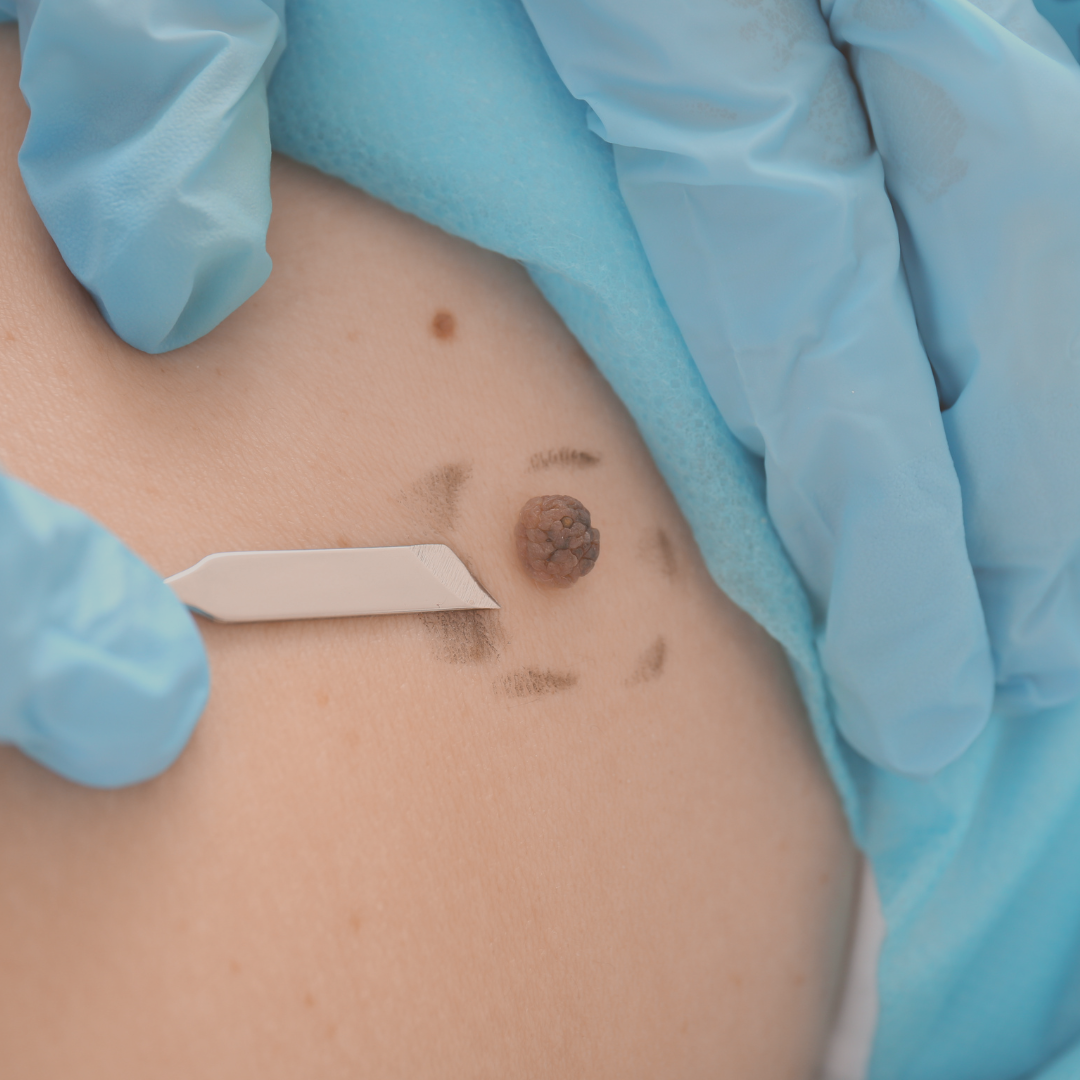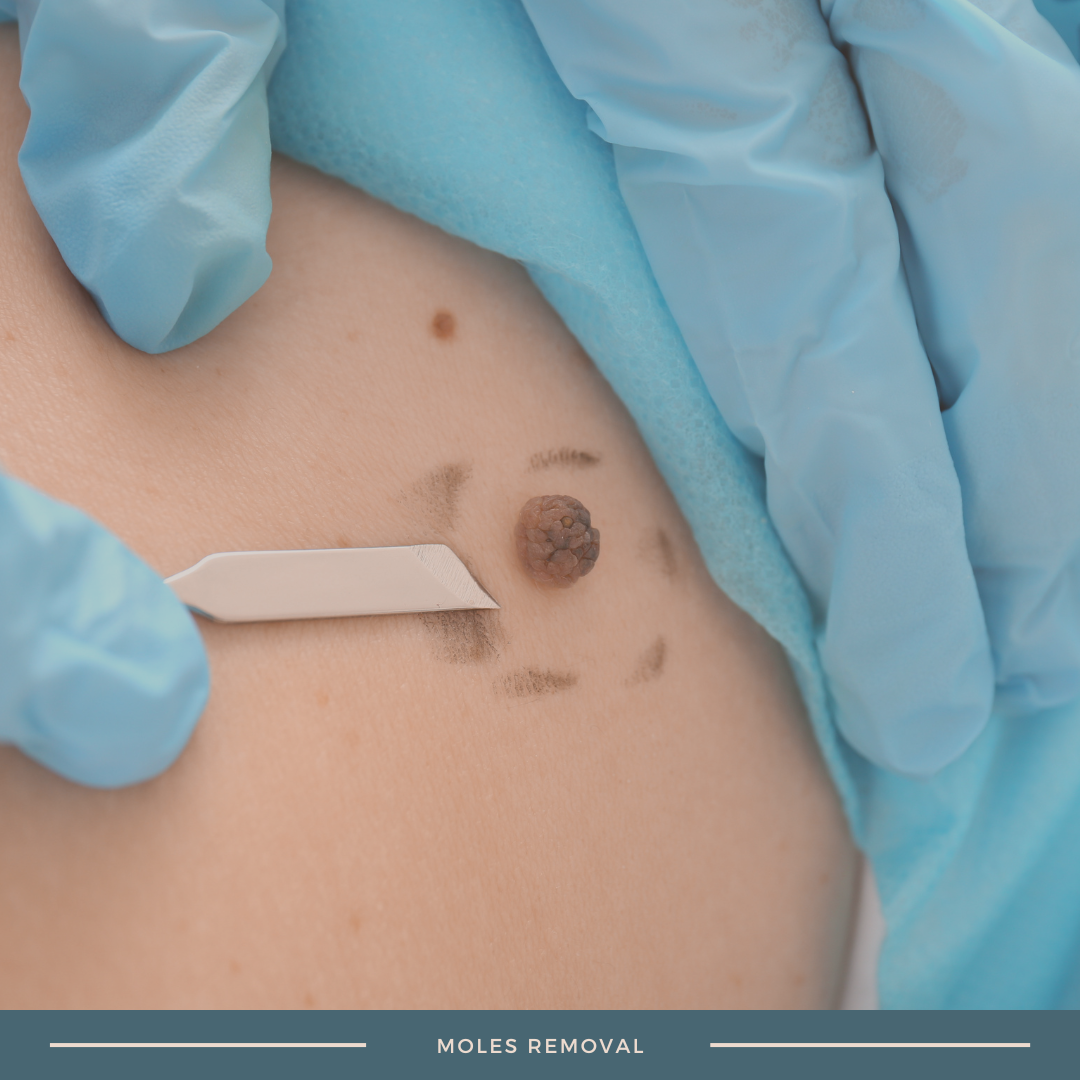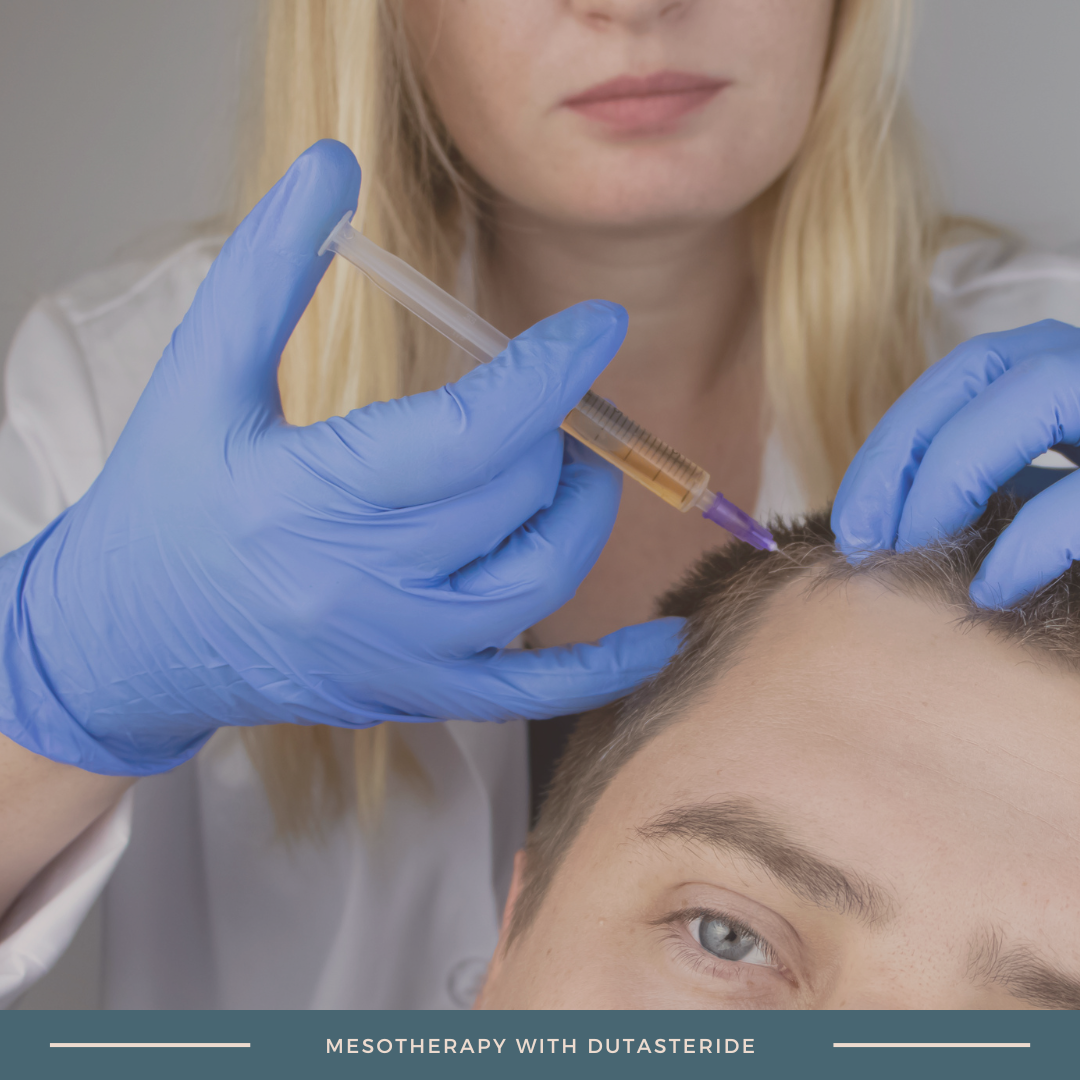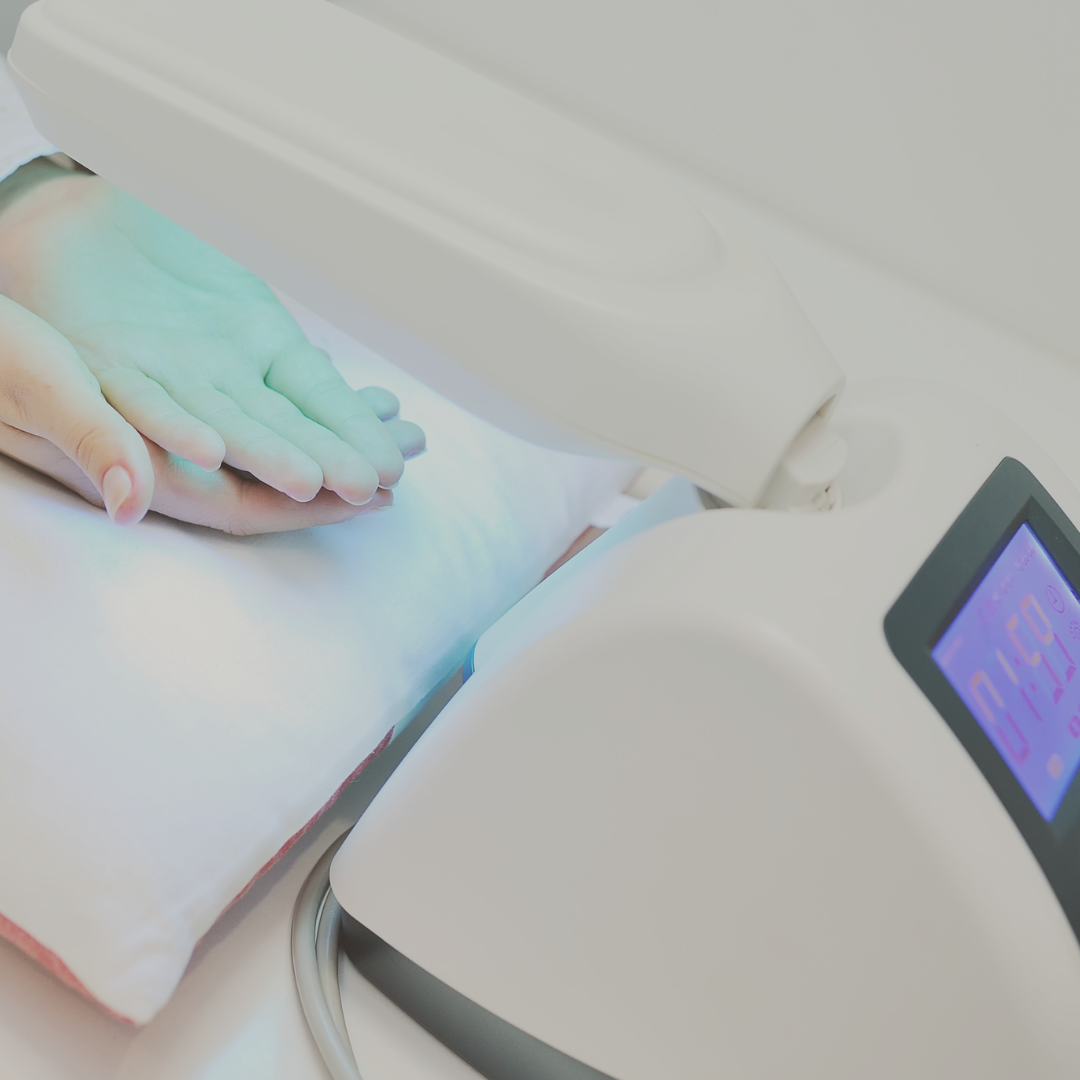TREATMENT
Mole Removal Service
Mole Removal Service
________________________________________
What are Moles?
A mole is a small dark spot on the skin that appears from a collection of melanin cells. Moles can come in many varieties and styles - some are flat, raised, flesh toned, brown, black or sometimes yellow/red in colour. It is important to monitor any changes that may occur in moles due to the possibility of dangerous cancerous moles developing on the skin called melanoma mole.
These types of moles need to be monitored closely as they can cause serious damage if not caught early enough. For instance, melanoma mole has the potential to penetrate beyond the top layers of skin and attack other body tissue as it grows. It is always important to pay close attention to mole skin and its surroundings for any suspicious changes you may notice over time.
Can anyone suffer from Moles?
Moles are a common occurrence on nearly everyone’s skin, but some people are more prone to mole skin formation than others. Those with lighter complexions are the most likely candidates for mole formation. With even exposure to the sun's UV rays, mole on skin formation can be found anywhere on the body. While having moles does not automatically mean you are at risk for cancerous mole growths such as melanoma mole.
It is important that any suspicious mole growths or blemishes be brought to a dermatologist for examination or biopsy. It is especially important for those at high risk of forming mole skin growths to regularly examine their skin and take note of any changes in size, shape, colour or other characteristics. Moles should never be scratched or removed until after speaking with a doctor.
What causes moles?
Moles can be a symptom of skin cancer, making it important to do periodic a mole check in order to keep an eye on changes. Moles are very common, and typically look like dark spots of any shape or size. Normal moles have a smooth texture, symmetrical shape and uniform colour whereas itchy moles often appear differently due to inflammation and allergies].
If you find that a mole has changed its appearance noticeably, it could be the sign of skin cancer so it's important to get it checked by a professional. Furthermore, if you have a bleeding mole it should be looked at immediately as it is also potentially indicative of mole skin cancer. With a regular mole check and prompt visits to your doctor with concerns about any noted changes, you will detect any suspicious moles before they become more serious.
How to get rid of moles?
Say goodbye to pesky moles with mole removal from Welbeck Life! Our mole removal services utilize two main methods - shave removal and surgical excision. With shave removal, our experts use a sharp blade to carefully remove moles and offer mole removal near me for quick and safe mole removal, no matter your location. Alternately, surgical excision is an in-depth mole removal procedure that requires larger portions of the mole tissue to be cut away by specialized surgeons.
This type of mole skin cancer mole removal requires the cutting away of mole tissue which may require stitches or bandage afterwards. No matter your need for mole removal, Welbeck Life can provide top-notch care and experienced professionals who will ensure your safety and wellbeing while performing these procedures!
How to prevent mole cancer?
It's important to take mole skin cancer prevention seriously, so keeping track of any moles you have and looking out for changes is key. If you’ve noticed a mole on your face that looks like it’s changing in size or shape, you should get mole removal near me right away.
Additionally, there are mole removal options available to help protect against mole skin cancer so that the mole won't continue to change and become cancerous. Taking proactive action by monitoring changes in moles and seeking mole removal can greatly reduce the risk of mole skin cancer and give you peace of mind.
What do you need to know about mole skin cancer?
It is important to familiarize yourself with mole skin cancer, as it is the most common form of skin cancer. Moles are small clusters of melanocytes that can appear anywhere on your body including your face, neck, arms and hands. Although moles are generally harmless, they can develop into mole cancer or other forms of skin cancer if left unchecked. All mole removal candidates should have their suspicious-looking moles checked by a certified dermatologist to confirm if there’s any mole cancerous. If you believe you may have a mole that appears to be an early form of mole cancer or could potentially be a sign of something dangerous, Welbeck Life offers mole removal treatment with minimal downtime and maximum results.












